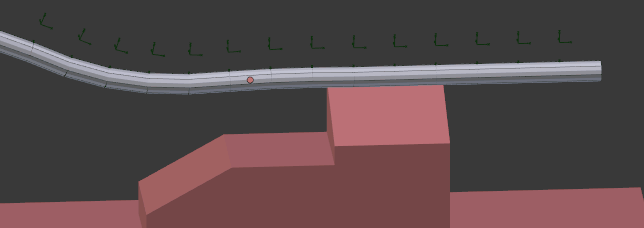I'm making a shower hose that follows the handle when it moves.
I've created it successfully following THIS tutorial, but the hose is too "elasticy". I'm wondering which settings I should change (from the tutorial) to make it more rigid.
I also want it to have less "bending points" when it's moved, it should really only have one major curve like shower hoses do when you move them around.
Cheers.









